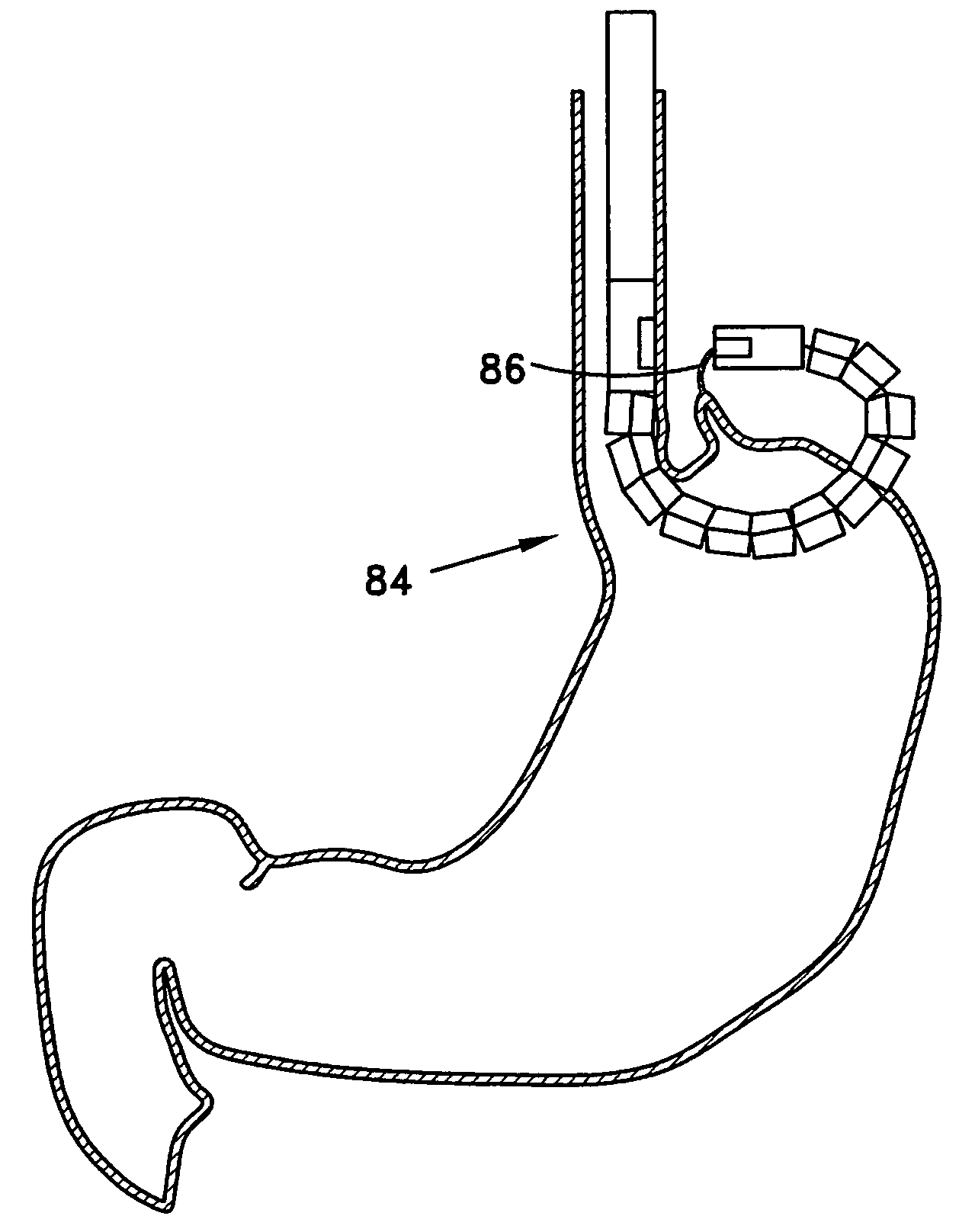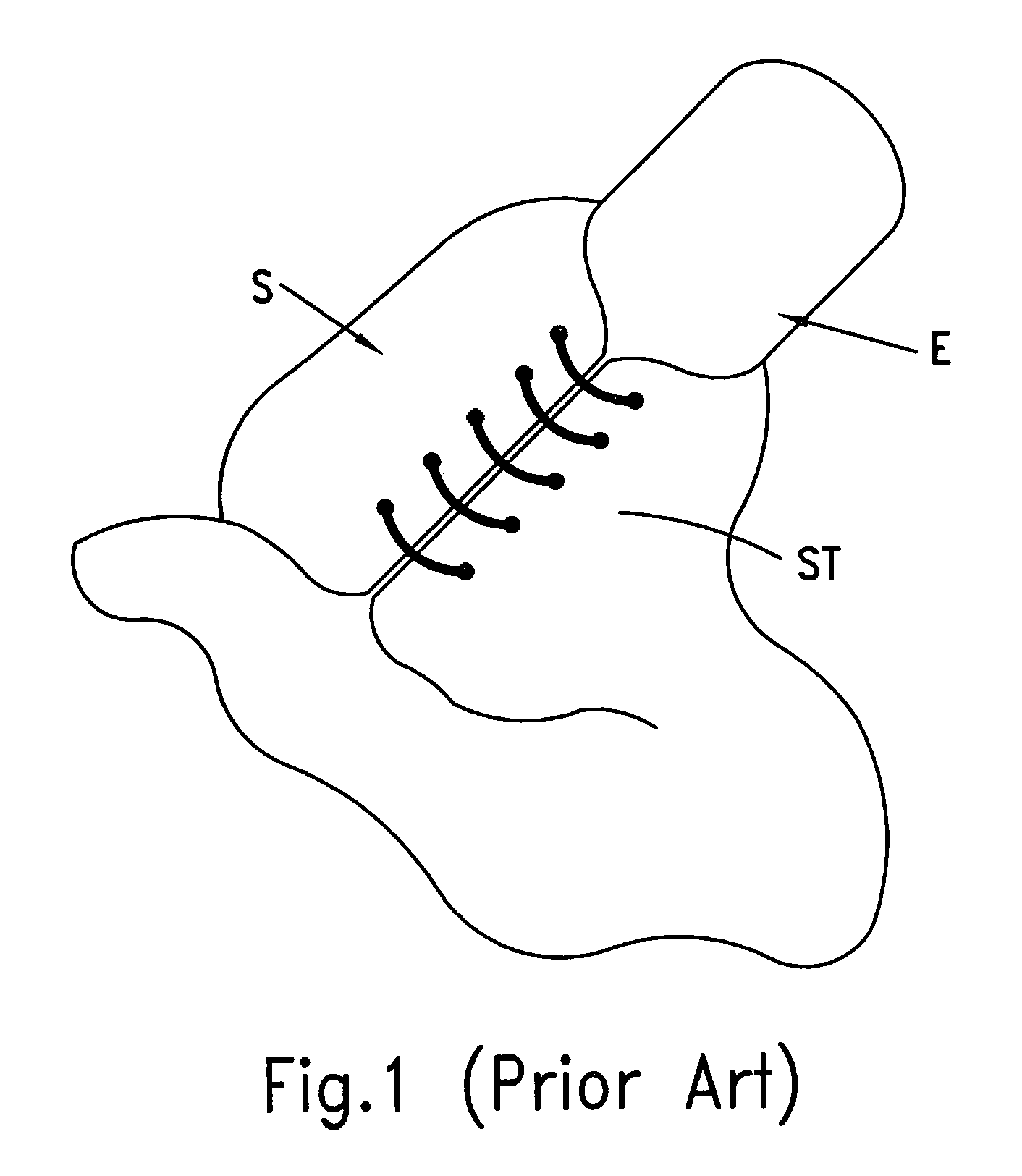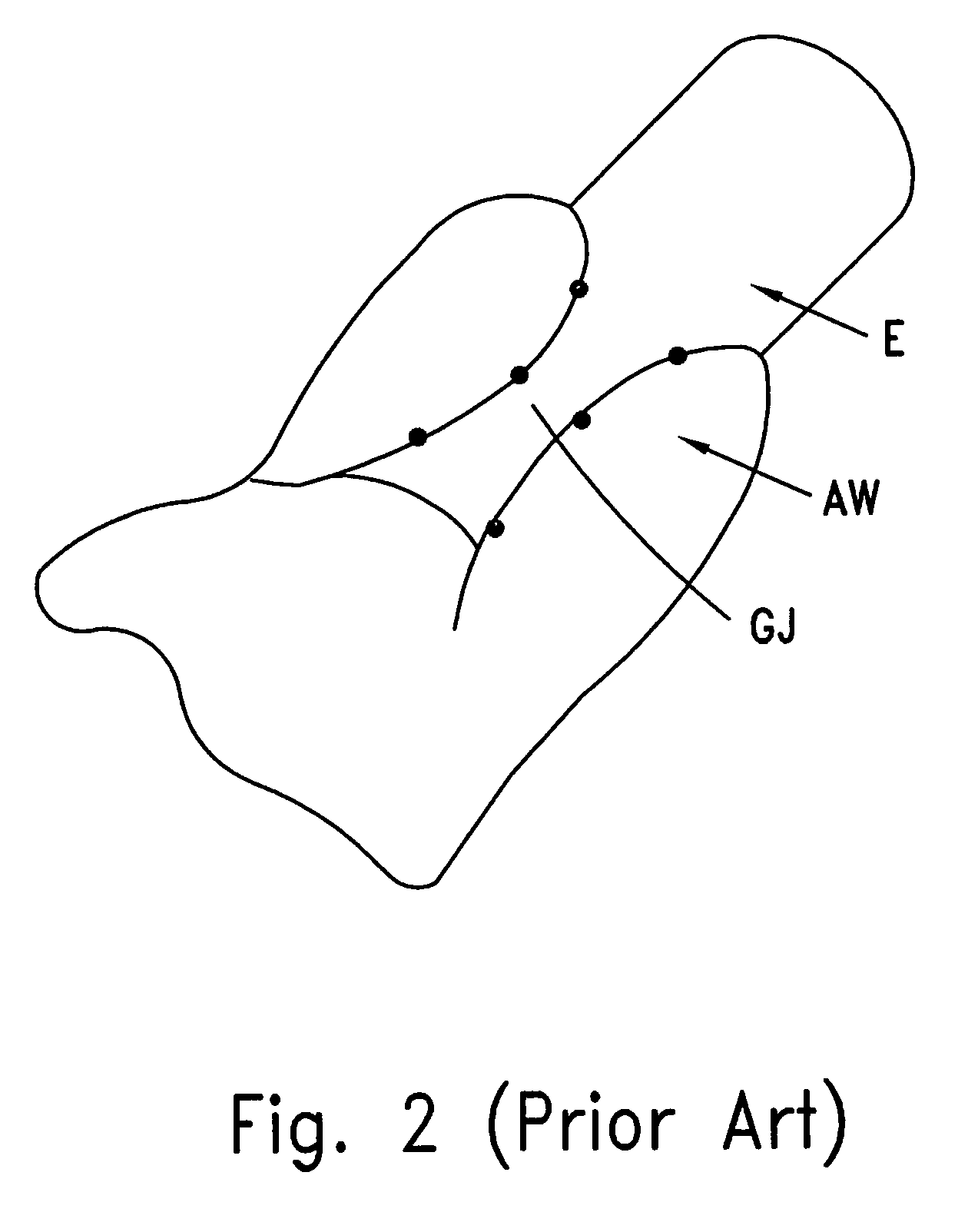Transgastric method for carrying out a partial fundoplication
a technology of partial fundoplication and transgastric method, which is applied in the field of endoscopic system, can solve the problems of reflux nocturnal aspiration, frequent malfunction of the lesion, and can be quite serious in itsel
- Summary
- Abstract
- Description
- Claims
- Application Information
AI Technical Summary
Benefits of technology
Problems solved by technology
Method used
Image
Examples
Embodiment Construction
[0071]The present invention employs the various embodiments of endoscopic apparatus described in the above referenced published International Patent Applications WO01 / 67964, WO / 02 / 39909, WO02 / 24058, WO02 / 068988, WO2005 / 002210, WO2005 / 115221, WO2005 / 115255, WO2005 / 120329, and WO2006 / 033109. In WO01 / 67964, which is the initial publication in this series, is described an endoscopic device with a surgical stapler attached to its shaft in such a way that bending the articulation section of the endoscope through an angle of 270° brings the anvil of the stapler, located on the distal tip of the endoscope, into correct working position with the cartridge containing the staples and staple firing mechanism, located on the proximal end of the articulation section. The endoscope-stapler unit is especially suited for performing fundoplication procedures as a treatment for GERD. Experienced persons will realize however, that the basic device itself and in particular the improvements to many of it...
PUM
 Login to View More
Login to View More Abstract
Description
Claims
Application Information
 Login to View More
Login to View More - R&D
- Intellectual Property
- Life Sciences
- Materials
- Tech Scout
- Unparalleled Data Quality
- Higher Quality Content
- 60% Fewer Hallucinations
Browse by: Latest US Patents, China's latest patents, Technical Efficacy Thesaurus, Application Domain, Technology Topic, Popular Technical Reports.
© 2025 PatSnap. All rights reserved.Legal|Privacy policy|Modern Slavery Act Transparency Statement|Sitemap|About US| Contact US: help@patsnap.com



